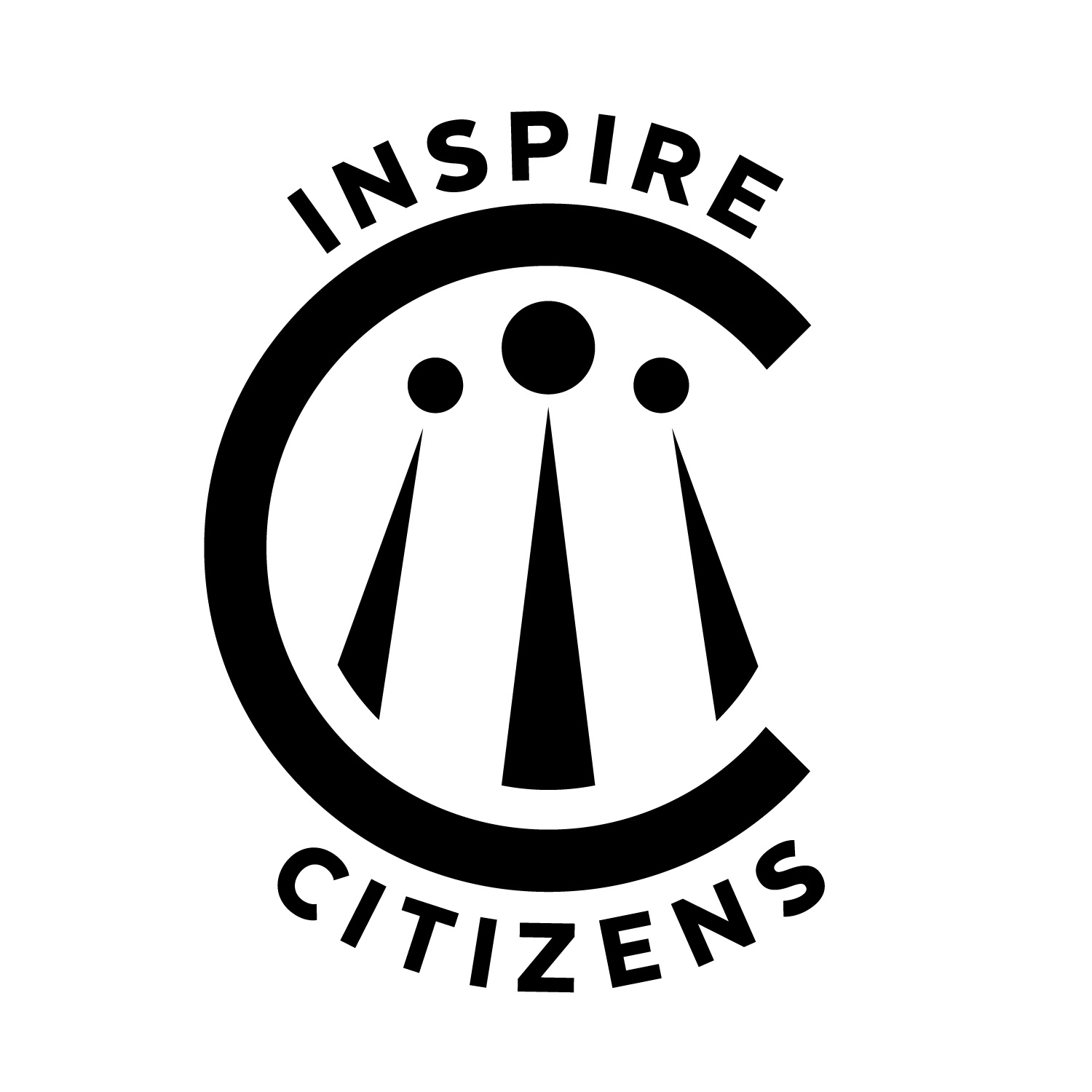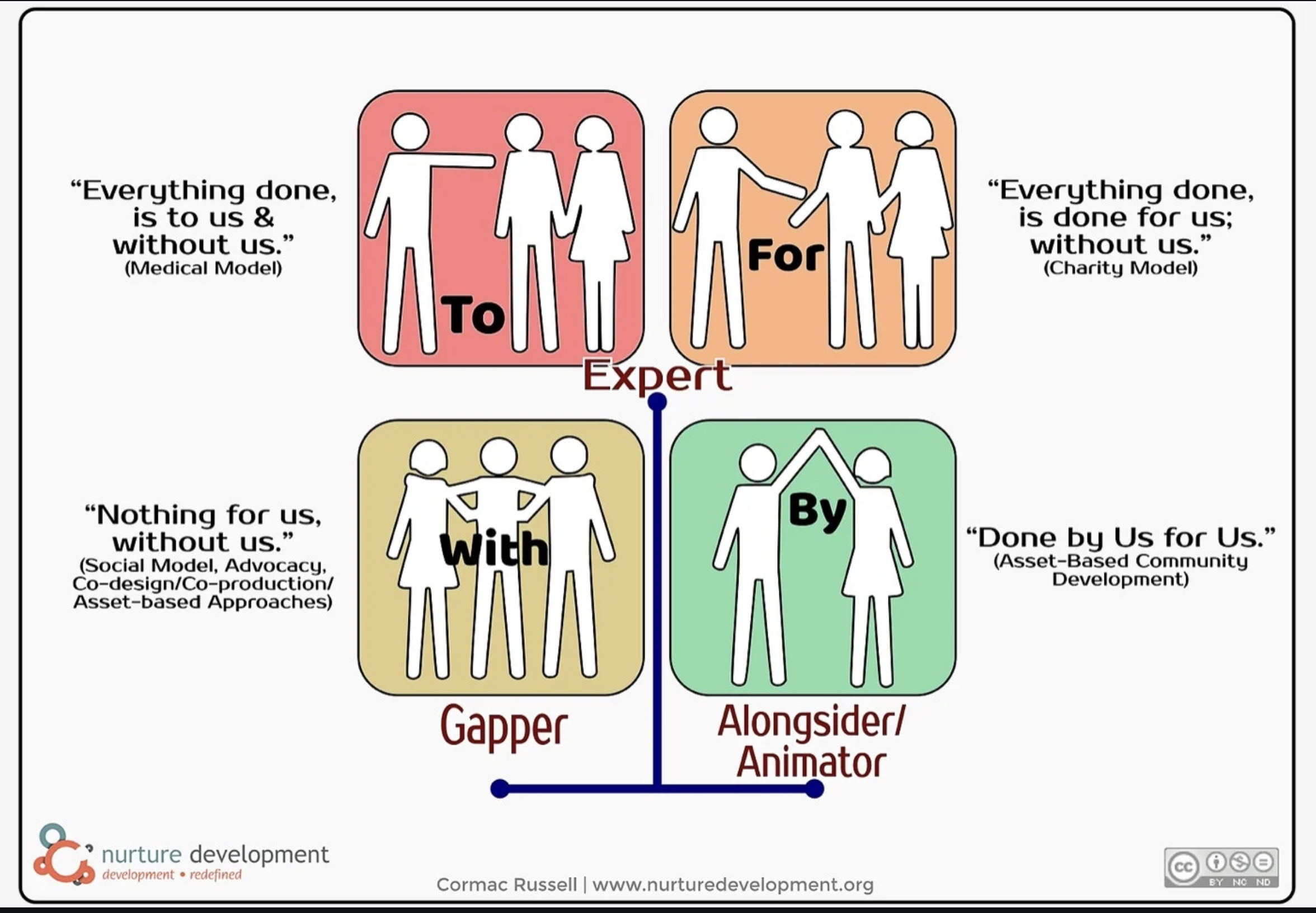PHASE 3
Q: How am I taking meaningful and sustainable action to address the issue that I care about?
The IMPACT phase of our Empathy to Impact framework emphasizes not only what students create or do (outputs), but also the meaningful results of their actions (outcomes) and the deeper, more sustained shifts they contribute to in communities or systems (IMPACT). This phase is about moving from ideas to real-world application—where learners evaluate the effectiveness of their efforts and reflect on how their actions contribute to long-term well-being, justice, and sustainability. These following steps are foundational for effective community engagement.
IMPACT steps:
Step 1 - Identify WHAT type of Action students will engage in.
Either as an educator team or with your students, identify which type of action is linked to your summative assessment or summative learning goals and identify a type of action that provides opportunities for students to transfer their knowledge into a real world context.
(Define Clear Intended Outcomes and Impact Goals)
Guide students to identify both short-term outcomes (what will change as a result of their action) and long-term impact goals (how might this create deeper, lasting change). Use backward design and essential questions that tie outputs to real-world transformation.Step 2 - Identify WHO we will collaborate with to take action.
Conduct a community assets audit, create a vetted community partner list, explore an existing schoolwide community partners list, or brainstorm possible community assets that you could collaborate with to design a real-world opportunity to engage in action or service. Ensure that this reciprocal action meets your learning outcomes and transfer goals, but will also be a beneficial collaboration with the partner.
Step 3 - Define and Provide Opportunities for Action/Service/Engagement
As a teacher team you might identify a larger summative service or action that you are guiding students towards, you may provide a menu of possible actions that students can stake or you may following student inquiry and use the resources to encourage students to engage effectively.
Extension:
(Integrate Cycles of Action and Reflection):
Structure time for learners to engage in action (e.g., advocacy, service, design, campaigns) and to critically reflect on the effectiveness, ethics, and sustainability of their work. Reflection can include stakeholder feedback and self-assessment aligned to impact goals.(Plan for Ongoing Empowerment and Transfer):
Design opportunities for students to move their impact beyond the classroom—through community partnerships, public exhibitions, or iterative projects that can evolve. Emphasize transferability: how the knowledge, skills, and mindsets developed can be applied to future contexts and challenges, even by future collaborators or community partners.
What Type of Action will you engage in?
Choose your type(s) of action that students might engage in:
Conduct a Community Assets Audit:
Explore how students might interact with community partners
Determine how students will have an impact.
Consider long term reciprocal relationships
Qualities of Reciprocal Relationship
•Conditions of equality
•Ongoing interactions & longer duration of service
•Continuity of relationships with the partner organization
•Ability to communicate effectively
•Based on needs
•Mutual Benefit
•May start with understanding and
•relationship building and not move to action until later
•Use of evidence to continuously reflect & improve over time
•Capacity Building on-site
Considerations for Co-Curricular or Experiential Learning Circumstances
When linking to curriculum, it is important that our action and our community partner align with the assessment or the learning output or target of the curricular experience or the learning experience.
When working with student clubs, student leadership groups, after-school activities, or advisory programs, you have a little bit more flexibility. So we encourage you to use community asset audits and action menus with your student leaders in discussions—in your advisory groups or in your extracurricular activities during some of your earlier sessions—so students have a wider idea of how they can take action. This also helps move them away from traditional approaches like bake sales, charity drives, fundraisers, and donations.
In experiential learning contexts, it is important to consider both the geographical location and the community partner you might be collaborating with on an experience. We encourage moving away from possibly harmful or short-term actions, such as a one-hour visit to an orphanage.
When planning experiential learning opportunities, consider what constitutes deep action, reflect on the qualities of reciprocal interactions, and identify a community partner to collaborate with prior to the experience to increase depth and ensure meaningful impact.
Other helpful resources:
School as a Sustainability Living Lab
In collaboration, students, educators, and the greater school community can investigate and design how to set sustainability targets, how to promote more sustainable attitudes and behaviors, how to shape actual practices for greater sustainability, and how to collect evidence in order to actively monitor progress with a deep link to curriculum or program goals.
By using the school community and building as a sustainability lab, learners are empowered community members that apply global thinking to local and personal action. These micro-local actions make applied learning and authentic sustainable impact visible on a daily basis within the functions and operations of the school and behaviors of the campus community.
Related resources:
Get Transition started in your street, community, town, school or organisation
Transition is a movement that has been growing since 2005. It is about communities stepping up to address the big challenges they face by starting local. By coming together, they are able to create solutions together. They seek to nurture a caring culture, one focused on connection with self, others and nature. They are reclaiming the economy, sparking entrepreneurship, reimagining work, reskilling themselves and weaving webs of connection and support. Courageous conversations are being had; extraordinary change is unfolding.
Transition is deeply ambitious. It wants to change the way the places we live feed themselves, house themselves, employ themselves, power themselves.
That’s a big ask. And it will take time, determination and togetherness. But what’s vital to remember is that how you do your projects matters as much, if not more, than what the projects are. What we are doing here isn’t just creating projects that reimagine and rebuild the world.
What is just as important is that the way we work, the organisational cultures we create, should also model the kind of world we want to create. There’s no use trying to create a new, healthier and more resilient culture if we end up replicating the unhealthy ways of relating and working that underpin our current culture.
Related resources:
Compassion and Wisdom
True wisdom is to directly see and understand for ourselves. At this level then, wisdom is to keep an open mind rather than being closed-minded, listening to other points of view rather than being bigoted; to carefully examine facts that contradict our beliefs, rather than burying our heads in the sand; to be objective rather than prejudiced and partisan; to take time about forming our opinions and beliefs rather than just accepting the first or most emotional thing that is offered to us; and to always be ready to change our beliefs when facts that contradict them are presented to us.
Just as wisdom covers the intellectual or comprehending side of our nature, compassion covers the emotional or feeling side of our nature. Like wisdom, compassion is a uniquely human quality. Compassion is made up of two words, 'co' meaning together and 'passion' meaning a strong feeling. And this is what compassion is. When we see someone in distress and we feel their pain as if it were our own, and strive to eliminate or lessen their pain, then this is compassion.
Related resources:
Futures Media
Futures Media provides an open space for students everywhere to explore and produce informed media for the critical and compassionate exchange of ideas.
Through nearly twenty student-centered media channels, learners explore and engage with issues, ethics and diverse perspectives alongside humane storytelling, technology integration, journalism, civil discourse and information literacy.
In concert with partnering schools, classrooms, or student journalists, we aim to build student-led media labs grounded in the Empathy to Impact design system: Care, Aware, Able, Impact.
ICFM learners, producers, and artists interpret global media while also working to publish credible information, capture underrepresented stories and voices, amplify imagination, and take systematic action for sustainable development and equity.
Related resources:
Further Reflection:
How has my action impacted my community and myself?
“IMPACT” in action
5 Essentials from COJOWA: How One School is Getting Service Learning Right
At Cartagena’s Colegio Jorge Washington (COJOWA), the journey into meaningful service learning wasn’t about quick fixes or flashy programs. It was about building something that lasts. Jessica Benitez, COJOWA’s Community Engagement Coordinator, shares five essential reflections from their multi-year transformation—offering insights for any international school ready to do service learning with depth, respect, and purpose. (read more…)
Adding Significance Through Service: Reimagining a Grade 3 Inquiry Unit
At Lincoln Community School in Accra, Ghana, a familiar Grade 3 unit about famous changemakers took a transformative turn this year. With thoughtful facilitation from Inspire Citizens and the bold collaboration of the Grade 3 team—including educators Monica Boakye, Ernestina Quartey, Kip Daly, Michael Addo and Michele Butler alongside curriculum leader Natalie Kramer—the project evolved into a cross-school, empathy-driven partnership rooted in service learning. (read more…)









